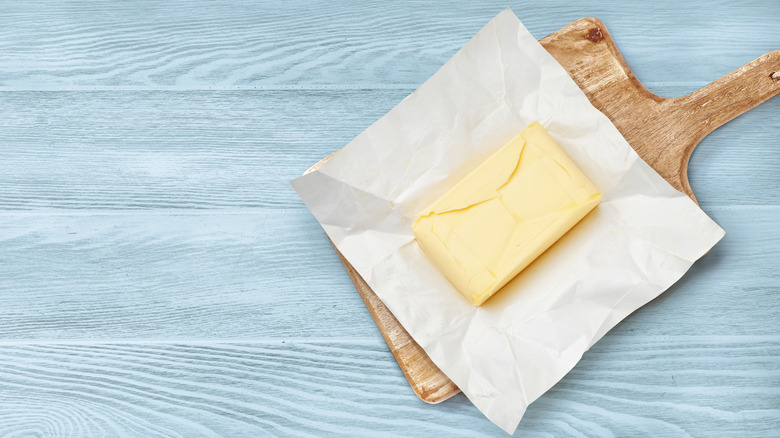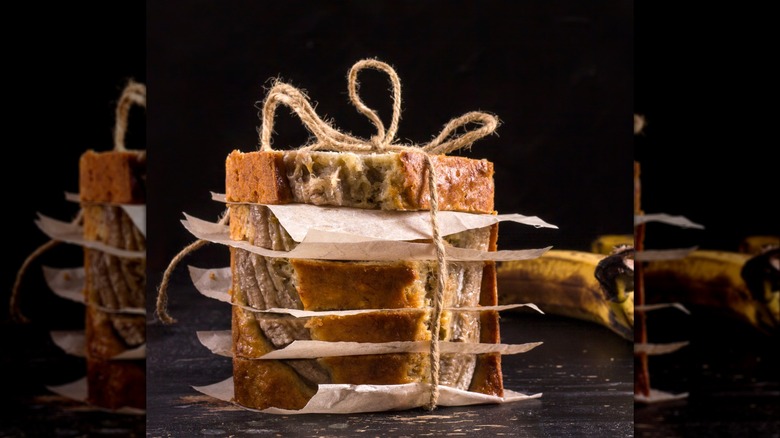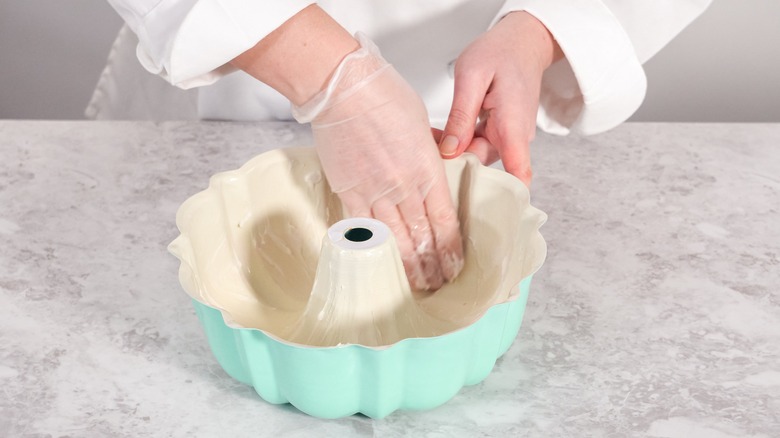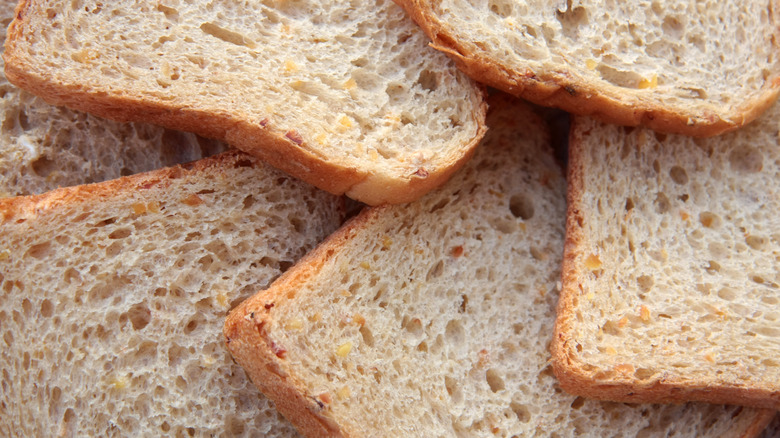Save Your Butter Wrappers To Keep Sandwich Bread Soft
Usually when unwrapping a new stick of butter, you might not think twice about tossing the wrapper in the trash. After all, what use could you possibly have for a greasy piece of paper? But, as it turns out, you can reuse a butter wrapper in plenty of creative ways, starting with keeping bread soft and fresh.
Think about it — any time you take the end piece of bread from the loaf, another slice is exposed to air, moisture, and bacteria. A butter wrapper, however, makes a perfect barrier between your remaining bread and its surroundings. What's more, the residual butter helps the bread retain moisture (not to mention offers great flavor and might save you a step after you've toasted the slice).
Of course, even with the addition of a butter wrapper, you'll see the best results if you store your bread in a box, allowing it to stay cool, covered, and vented. Because a butter wrapper won't do you any good if your loaf of bread is just sitting out on the counter at all times.
Butter wrappers keep bread slices from sticking together too
At the most basic level, butter wrappers aren't too different from parchment paper. One side is similar to regular paper, while the other side is slick to prevent sticking. As such, butter wrappers can be used as an alternative to parchment paper in a pinch and work great for separating freshly-baked pieces of bread, too.
And, if you need to separate other foods for storage in the freezer, whether that's bread, cheesecake, or individual cookies, butter wrappers work for this purpose as well. Because the greasy butter won't mix with water, you don't need to worry about ice crystals forming and resulting in your bread or other baked goods stuck to the paper.
Similarly, you might have made Rice Krispie treats or frosted desserts, and you need to layer them in a container for safe keeping. Stacking them on each other will land you with a single, large block, but you can separate the layers with parchment paper or a few handy dandy butter wrappers to prevent the mess.
Use butter wrappers to grease your cookware
If you're baking bread — or another baked good — butter wrappers work for a slick barrier as well. Just as you might take out a can of nonstick cooking spray to grease up a loaf pan, you can use a butter wrapper to do the trick using the residual dairy left on the surface. This method imparts a nice buttery flavor that regular cooking spray may not offer, as well as the ability to better control where the grease goes. As we've all experienced, nonstick spray can get everywhere, leaving the rims and the outside of your cookware slick and oily.
Alternatively, you can use butter wraps to limit messes inside the pans. Whether you're baking bread, a cake, or muffins, you can line your cookware with butter wrappers, buttery side facing upward. This keeps the pan clean and nonstick, while also giving your baked goods a tasty, buttery finish. Who doesn't love a hack for fewer dirty dishes, right?
If you're following a recipe that uses some kind of butter, you may have a fresh wrapper on hand to grease the pan with, but you can also save the wrappers so you build a stockpile. Be sure to keep them sealed in a bag or airtight container, and in the fridge or freezer. No matter how little remains, that residue is still butter, and should be stored as such.
Alternative ways to keep your bread fresh
Whether you're running short on butter wrappers or simply aiming to optimize your bread's storage conditions, there are numerous alternative methods to keep this essential sandwich ingredient soft and fresh. For instance, replacing that butter wrapper with a sacrificial bread slice can help control mold growth, as it protects the exposed end of your sliced loaf from contaminants and moisture. Moreover, the simplest way to safeguard the soft interior of a loaf is to refrain from cutting into it until you're ready to consume the bread.
Another tip for maintaining your bread's softness over an extended period involves storing it in a breathable material, such as linen or cotton, or even a paper bag in a pinch. It's also advisable not to store fresh bread in plastic for the long term, as plastic inhibits airflow and traps moisture inside with the bread, creating ideal conditions for mold. Keep your bread someplace cool and dry, and your sandwiches will thank you.




